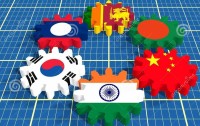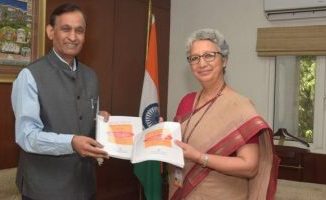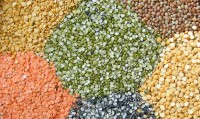
The Government has implemented certain new initiatives for the overall development of Trade and Commerce in the Country in the Foreign Trade Policy announced on 01.04.2015. The initiatives are listed below:
Rationalization of multiple Schemes: The New Foreign Trade Policy (2015-20) was launched on 1st April, 2015 with a focus on supporting both merchandise and services exports and improving the ‘Ease of Doing Business’. DGFT consolidated 5 different incentive schemes under the earlier Foreign Trade Policy 2009-14 for rewarding merchandise exports into a single scheme, namely the Merchandise Exports from India Scheme (MEIS).MEIS aims to incentivize export of merchandise goods produced/manufactured in India. Rewards @ 2-5% under MEIS are payable as a percentage of realized FOB value of covered exports, by way of the MEIS duty credit scrip, which are transferable and can also be used for payment of a number of duties including the basic customs duty. At present, 7914 tariff lines at 8 digit HS Codes are covered under MEIS scheme.
DGFT launched a new Services Exports from India Scheme (SEIS) in the FTP 2015-2020. The Scheme provides rewards to service providers of notified services who are providing service from India. The rate of reward under the scheme is based on net foreign exchange earned. The present rates of reward are 3 % and 5%.
The Government has introduced the Interest Equalization Scheme on Pre & Post Shipment Rupee Export Credit with effect from 1.4.2015. The scheme is available to all exports under the notified tariff lines [at ITC (HS) code of 4 digit] and exports made by Micro, Small & Medium Enterprises (MSMEs) across all ITC (HS) codes. The rate of interest equalisation is 3% per annum.
In addition the Government continues to provide the facility of import of duty free raw materials for exports through schemes like Advance Authorisation, Duty Free Import Authorisation (DFIA) and duty free import of capital goods for exports through Export Promotion Capital Goods (EPCG) Scheme.
The Scheme for Deemed Export encourages ‘Make in India’ initiative by neutralizing the duty paid on inputs either imported or domestically sourced through refund of terminal excise duty and duty drawback at brand rate.
The Government has also taken the following measures for ensuring ease of doing business under the new Foreign Trade Policy 2015-20:
- Reducing number of Documents:Number of mandatory documents required for exports and imports have been reduced to 3 each.
- Introduction of simplified e-IEC: Applications for Importer Exporter Code(IEC)has been simplified and only two documents are required to be uploaded along with the digital photograph while applying for IEC. eIEC has been introduced w.e.f. April 1, 2016 doing away with the issuance of physical copy of IEC. IEC has been integrated with e-BIZ portal of DIPP so that firms have choice to use either DGFT portal or e-Biz portal for making an application. IEC and EPCG applications have been integrated with e- Nivesh portal implemented by PMG set up by Cabinet Secretariat.
- Online Inter-ministerial consultationshave been initiated for considering applications for issue of authorizations for export of SCOMET items (Special Chemicals, Organisms, Materials, Equipment and Technologies) to reduce processing time of applications.
- Sharing of export proceeds realization Data: DGFT shares exports proceeds realization data generated by the electronic bank realization certificate (eBRC) system with 17 agencies. The eBRC system captures details of the foreign exchange received by exporters through the banking channel.
- DGFT has simplified various ‘Aayat Niryat Forms’(format for making applications under Schemes of FTP) bringing in clarity in different provisions, removing ambiguities and enhancing electronic governance.
A new scheme called Trade Infrastructure for Export Scheme (TIES) has been announced by the Government with the objective to enhance export competitiveness by bridging gaps in export infrastructure, creating focused export infrastructure, first mile and last mile connectivity for export oriented projects and addressing quality and certification measures. The Central and State Agencies, including Export Promotion Councils, Commodities Boards, SEZ Authorities and Apex Trade Bodies recognised under the EXIM policy of Government of India are eligible for financial support under this scheme.
Indian Trade Portal launched by Department of Commerce and managed by FIEO displays information useful for export import. It contains the Trade enquiries uploaded by Indian trade missions, Tariff and Trade data of India’s major trade partners, Export Market Reports and Trade Agreements etc.
The Government is implementing the Niryat Bandhu Scheme with an objective to reach out to the new and potential exporters and mentor them through orientation programmes, counseling sessions, individual facilitation etc., on various aspects of foreign trade for being able to get into international trade and boost exports from India.
The performance indicating profit loss of the companies for the years 2014-15 and 2015-16 and till the 3rd quarter of 2016-17 are not available with the Department of Commerce.
India is a signatory to the World Trade Organization and is committed to Free and Fair Trade. Import/export take place depending on demand and supply. Goods consumed by people vary in terms of characteristics and parameters given the differentiated nature of consumer demand. In a globalised and interdependent world, no country can remain isolated. The Government has also been taking timely measures in order to boost the exports. The Government regularly takes stock of the changing dynamics at the global and regional level; and based on the inputs from the stakeholders including industry & trade bodies/associations and think tanks, FTP is revised/improved.






Leave a Reply
You must be logged in to post a comment.